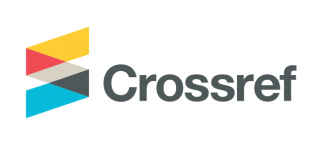ANALYSIS OF CAUSING FACTORS ON THE APPEARANCE OF HABS IN COASTAL WATER OF MAKASSAR
DOI:
https://doi.org/10.20956/jiks.v4i2.7065Keywords:
Phytoplankton, HABs, Makassar, Coastal, TempratureAbstract
HABs were types of phytoplankton considered dangerous in the sea. Its appearance was triggered by an increase in nutrients and the presence of physical and chemical factors in the optimal conditions to support its growth. For that reason, research on the analysis of the causes of the emergence of HABs in the coastal waters of Makassar has been carried out. The implementation is carried out from March to June 2017 using non-experimental methods. The results showed that there were seven types of HABs, such as Protoperidinium, Gymnodinium, Ceratium, Prorocentrum, Gyrodinium, Gonyaulax, and Dinophysis. That types from the Dinophyceae Class. The appearance of the types of HABs was due to the influence of temperature with the relationship were very strong and positive.
References
Ngando. 2004. Structure of the phytoplankton communities in two lagoons of different salinity in the Sfax Salters (Tunisia). Journal of Plankton Research. Vol 26(6): 669-679.
Barron, S., C. Weber, R. Marino, E. Davidson, G. Tomasky & Robert Howarth. 2002. Effects of varying salinity on phytoplankton growth in a low-salinity coastal pond under two nutrient conditions. Biological Bulletin. 203: 260–261.
Bouman, H. A., T. Platt, S. Sathyendranath, W. K. W. Li, V. Stuart, C. Fuentes-Yaco, H. Maass, E. P. W. Horne, O. Ulloa, V. Lutz & M.
Kyewalyanga. 2003. Temperature as an indicator of optical properties and community structure of marine phytoplankton: implications for remote sensing. Marine Ecological Program Series. Vol. 258: 19-30.
Carmichael, W.W., 2013. Human health effects from harmful algal blooms: a synthesis. Submitted by the HPAB to the International Joint Commission. Department of Biological Sciences, Wright State University.
Dale, B. Edwards, M. Reid & P.C. 2006. Ecology of harmful algae: climate change and harmful algal bloom. Springer-Verlag. Heidelberg.
Effendi, H. 2000. Telaah kualitas air (bagi pengelolaan sumberdaya dan lingkungan perairan). Yogyakarta.
Hasani, Q., E.M. Adiwilaga & N.T. Murti. 2012. The relationship between the harmful algal blooms (habs) phenomenon with nutrients at shrimp farms and fish cage culture sites in pesawaran district Lampung Bay. Makara Journal of Science. Vol 16/3: 183-191.
Irawan, A., Q. Hasani & H. Yuliyanto. 2014. Fenomena harmful algal blooms (habs) di pantai ringgung teluk lampung, pengaruhnya dengan tingkat kematian ikan yang dibudidayakan pada karamba jaring apung. Jurnal Penelitian Pertanian Terapan. Vol 15 (1) : 48-53.
Karydis, M., 2009. Eutrophication assessment of coastal waters based on indicators: a literature review. Global NEST Journal. Vol 11(4) : 373-390.Livingston, R.J., 2001. Eutrophication processes in coastal systems. CRC Press.
Mulyani, R. Widiarti & W.Wardhana. 2012. Sebaran spasial spesies penyebab harmful algal bloom (hab) di lokasi budidaya Kerang Hijau (Perna Viridis) Kamal Muara Jakarta Utara. Jurnal Akuatika. Vol. III (1) : 28-39.
Newell, G.E. & R.C. Newell. 1977. Marine plankton a practical guide. Hutchison.
Núñez, E.J., I.Gárate, C.J. Band, A. Cordero; D.J. Lopez, F.E. Hernandez, A. Heredia & J.J. Bustillos. 2011. Impact of harmful algal blooms on wild and cultured animals in the Gulf of California. Journal of Environmental Biology, 32: 413-423.
Panggabean, L. 2006. Kista dinoflagellata penyebab HAB. Oseana, 31(2): 11-18.
Praseno, D. P. & Sugestiningsih. 2000. Retaid di perairan Indonesia. Pusat Penelitian dan Pengembangan Oseanologi-LIPI, Jakarta: 82 hal.
Raymont, J.E.G., 1980. Plankton and productivity in the ocean. Pergamon Press. Oxford.
Risamasu, F.J.L & H. B. Prayitno. 2011. Kajian zat hara fosfat, nitrit, nitrat dan silikat di perairan Kepulauan Matasiri Kalimantan Selatan. Ilmu Kelautan. 16 (3): 135-142.
Sidabutar, T. 2006. Bencana akuatik di perairan Teluk Jakarta tragedi bulan Mei 2004. Prosiding Seminar Nasional Tahunan III Hasil-hasil Penelitian Perikanan dan Kelautan, Fakultas Pertanian, UGM, Yogyakarta.
Syamsuddin, R,. 2014. Pengelolaan kualitas air: teori dan aplikasi di sektor perikanan. Pijar Press. Makassar.
Tomas, C.R, 1997. Identifying marine phytoplankton. Academic Press. America.
Wells, M.L., V.L. Trainer, T.J. Smayda, B.S.O. Karlson, C.G. Trick, R.M. Kudela, A. Ishikawa, S.Bernard, A.Wulff, D.M. Anderson & W.P. Cochlan. 2015. Harmful algal blooms and climate change: learning from the past and present to forecast the future. Harmful Algae. Elsevier. 49: 68–93.
Wiadnyana, N. 1996. Mikroalga berbahaya di perairan Indonesia. Oseanologi dan Limnologi di Indonesia, 29: 15-28.
Yamaji, 1960. Identification of marine plankton. Ilustsation Of Marine Plankton Of Japan. Japan. Hoikusha publishing co. Ltd. Osaka. Japan.
Downloads
Published
Issue
Section
License

This work is licensed under a Creative Commons Attribution 4.0 International License













